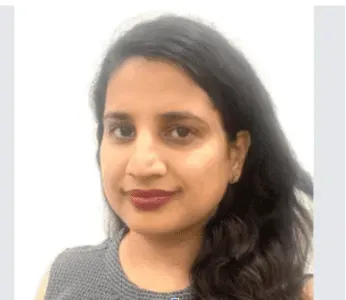From the moment humans first began to reflect on mortality, we have sought ways to honor those who pass from our world. The desire to care for the dead is one of the earliest markers of humanity, setting us apart from other species. Burial practices, in all their diversity, reveal deep insights into the beliefs, fears, and hopes of different cultures across history. They are more than just methods of handling remains — they are stories etched in soil, stone, and ritual.
Understanding ancient burial practices allows us to travel back in time, uncovering how people saw life, death, and what might lie beyond. It is in these ceremonies that we see humanity’s earliest expressions of creativity and narrative — elements still central to how we communicate today. At PlanetSpark, we believe every child has a storyteller within them, ready to give life to history, culture, and imagination. Our Creative Writing Courses nurture that potential through 1:1 personalised training, gamified learning, and AI-enhanced feedback, empowering children to share their own stories with the world.
Origins of Human Burial Practices
The earliest humans did not simply abandon their dead. Archaeological evidence suggests that as early as 78,000 years ago, people engaged in intentional burials, arranging bodies carefully and sometimes including objects alongside them. These early acts went beyond mere disposal; they signified respect, remembrance, and perhaps the belief in a life after death.
Burial practices likely began as practical measures to protect the living from disease or scavengers, but over time, they evolved into deeply symbolic rituals. The introduction of grave goods, ceremonial arrangements, and specific burial sites indicates that humans developed spiritual explanations for death and saw the deceased as needing care even after life had ended. In many early societies, elders or designated speakers would recite chants or stories during burials, ensuring that the deceased’s life was honored, a tradition echoing the power of spoken expression.
Preserve traditions through the art of storytelling with PlanetSpark’s Creative Writing Course. Start with a free trial class today.
Prehistoric Burials – The Dawn of Ritual
The origins of burial stretch back tens of thousands of years. Archaeologists have discovered that the earliest known burial site dates to around 78,000 years ago in Panga ya Saidi, Kenya, where a young child was laid to rest in a pit carefully dug into the cave floor. This was not a hasty disposal of remains, it was a deliberate, almost tender act.
Another remarkable site is the Qafzeh Cave in Israel, dating back over 100,000 years, where skeletons were found alongside ochre pigments and tools. The presence of grave goods suggests a belief in some form of life after death or, at the very least, a respect for the dead. Prehistoric communities often placed the deceased in fetal positions, perhaps symbolising a return to the womb of the Earth.
Even Neanderthals, once thought to lack symbolic thought, buried their dead in places like Shanidar Cave in Iraq, sometimes with flowers. These gestures reveal an early human understanding that death was not just an end, but a transformation, a story worth honoring.
Just as these prehistoric people preserved their heritage through ritual, today’s children can learn to preserve memories and histories through writing. At PlanetSpark, our Spark Diary feature encourages kids to record daily reflections, stories, and ideas, building the same sense of legacy through words that ancient humans built with stones, pigments, and ceremonial placement.

Egyptians and Mesopotamians
No discussion of ancient burial practices is complete without Egypt. For the Egyptians, death was merely a gateway to the Field of Reeds, a paradise mirroring life on Earth. The elaborate process of mummification, involving the removal of organs, drying of the body with natron, and wrapping in fine linen, was a painstaking act of love and preparation for the afterlife. Tombs were stocked with food, jewellery, statues, and amulets to aid and protect the deceased’s journey.
Mesopotamian cultures, like the Sumerians and Babylonians, saw death as a descent into the Netherworld: a shadowy realm beneath the earth. Families would bury their dead near or even under their homes to maintain a connection and offer food and drink during kispum rituals. In the Royal Cemetery of Ur, archaeologists found rich grave goods and even the remains of attendants, hinting at a belief in serving the deceased beyond life.
These detailed preparations required meticulous record-keeping and storytelling, much like how PlanetSpark helps young learners structure ideas clearly in their writing. Using SparkX, our AI-enabled analysis tool, students can refine their storytelling just as ancient priests refined the funeral scripts and incantations that guided the dead through the underworld.
Greco-Roman Practices
In ancient Greece, the journey of the soul was thought to begin with the final breath. Families acted quickly to prepare the body, washing, anointing it with oil, and wrapping it in a shroud. A coin, usually an obol, was placed in the mouth for Charon, the ferryman who carried souls across the River Styx to the realm of Hades. Without payment, the soul might wander restlessly forever.
Funeral processions, or ekphoroi, often included mourners chanting dirges, while poets composed verses to commemorate the deceased. Some funerals featured athletic games in honor of the dead — a tradition immortalised in Homer’s Iliad.
The Romans inherited many Greek customs but added grandeur. Wealthy Romans commissioned elaborate sarcophagi and tombs, decorated with reliefs depicting both real and mythological scenes. Wax death masks preserved the likeness of the deceased for generations. Social status shaped these rituals: public funerals with music, actors, and speeches for the elite; modest rites for common citizens.
At PlanetSpark, we echo the Greek and Roman value of public expression through our Debate Club, Speech Circles, and Open Mic events, where children gain the confidence to share their thoughts publicly, a skill as timeless as the funeral orations of ancient statesmen.
From oral traditions to written masterpieces, help your child become a confident writer with PlanetSpark’s Creative Writing Course. Join a free trial session now.
Hindu Funeral Traditions
Hinduism views the body as a temporary vessel for the soul (atman), which moves on through reincarnation. This belief underpins the practice of cremation, ideally performed before the next sunrise or sunset. The eldest son or closest male relative often lights the funeral pyre, symbolically releasing the soul from its earthly form.
Before cremation, the body is washed, anointed with sandalwood paste or oils, wrapped in white cloth, and adorned with garlands. If possible, it is taken to the Ganges River, whose waters are believed to purify the soul. Sacred mantras are chanted, guiding the soul towards moksha, liberation from the cycle of rebirth.
After cremation, ashes are collected and immersed in a holy river. Mourning rituals, such as the 13-day Shraddha ceremony, honor ancestors and affirm the family’s spiritual duty.
This focus on ritual and structure mirrors how children benefit from a personalised learning roadmap at PlanetSpark. Just as every funeral rite is tailored to an individual’s life and beliefs, our personalised curriculum addresses each child’s unique strengths and areas for growth in creative writing, public speaking, and storytelling.
Other Cultural Practices Across the Globe
While many cultures buried or burned their dead, others developed distinct traditions:
Viking Ship Burials: Norse chieftains and warriors were sometimes buried in ships, surrounded by weapons, animals, and treasures, ready to sail to Valhalla.
Tibetan Sky Burials: In high-altitude regions where burial and burning are impractical, bodies are offered to vultures in an act of generosity, returning the body to nature.
Native American Mound Burials: Civilisations like the Adena and Hopewell built earthen mounds as ceremonial burial sites, often containing intricate grave goods.
African Tribal Rites: Among the Ga of Ghana, coffins may be carved into shapes reflecting the deceased’s profession or passions — from airplanes to fish.
Pacific Islander Traditions: Some Polynesian societies practiced secondary burials, exhuming bones months later for cleaning and reinterment.
Each of these traditions tells a story, just as a well-crafted creative piece tells the reader about its characters, setting, and values. PlanetSpark’s Writers Guild and Story Writing Club foster this same storytelling instinct, encouraging children to explore diverse cultures and invent their worlds.
Capture the essence of culture and memory with PlanetSpark’s Creative Writing Course. Experience it in a free trial class today.

How Burial Practices Have Evolved in Modern Times
Over centuries, burial customs have evolved with technology, religion, and societal needs. Urbanisation led to the development of organised cemeteries. In the 19th century, the garden cemetery movement introduced landscaped memorial parks.
Today, environmental concerns are inspiring green burials, where biodegradable coffins and natural grave markers minimise ecological impact. Cremation rates have risen globally, while digital memorials now allow remembrance in virtual spaces.
In the same way, creative expression evolves with technology — which is why PlanetSpark integrates AI-led storytelling practice and digital platforms like Sparkline, where children can safely share their written or spoken work with peers.
Keep history alive through powerful words. Enrol in PlanetSpark’s Creative Writing Course and book a free trial class.
The Timeless Role of Communication
Even as funeral practices change, communication remains at the heart of remembrance. Whether through heartfelt eulogies, personal anecdotes, or shared stories, the spoken and written word ensures funerals remain moments of connection, meaning, and shared humanity. Just like ancient chants and oral traditions, these modern expressions keep memories alive for generations to come.
PlanetSpark: Modern Communication for Preserving Traditions
Just as ancient communities relied on skilled speakers to carry forward stories, rituals, and values, today’s children need strong communication skills to thrive in a global world. PlanetSpark’s Spoken English Courses equip learners with these skills through innovative, engaging methods that blend tradition with technology.
Key Features:
1:1 Personal Trainers for Every Child – Certified communication experts tailor lessons to each child’s pace, personality, and goals.
Personalised Curriculum – Based on detailed skill assessments, the learning roadmap adapts as children progress.
SparkX AI Video Analysis – AI-powered feedback on voice clarity, body language, and confidence.
AI-Led Practice Sessions – Independent practice with instant AI feedback on speeches and storytelling.
Spark Diary – A personal digital journal to build consistent writing and thinking habits.
Gamified Learning – Quizzes, challenges, and competitive play make English learning engaging.
Parent-Teacher Meetings – Regular updates and collaborative planning for progress.
Comprehensive Progress Reports – Detailed evaluations of grammar, structure, confidence, and delivery.
Exclusive Learning Clubs – Debate, Story Writing, Poetry, Comedy, Podcasting, and more.
Sparkline – A safe content-sharing platform for kids to post speeches, stories, and creative work.
Contests and Recognition – Storytelling, public speaking, and writing competitions encourage confidence.
SparkBee & SparkShop – Fun quizzes, rewards, and eBooks for grammar, vocabulary, and reading skills.
By combining personalized mentoring with cutting-edge technology, PlanetSpark ensures that children can confidently express themselves, whether they’re delivering a modern presentation or retelling the ancient myths and rituals of their culture.
Ensure cultural tales live on in writing. Start with PlanetSpark’s Creative Writing Course and enjoy a free trial class.
Conclusion
From prehistoric caves to modern crematoriums, burial practices reveal humanity’s deepest fears, hopes, and acts of love. They are as much about the living as the dead, preserving identity, passing down values, and creating meaning from loss. Just as archaeologists read the story of humanity through graves and artifacts, we can encourage our children to record their own stories, preserving their voice for generations to come. With PlanetSpark’s Creative Writing Courses, children gain the skills to become thoughtful observers, confident speakers, and creative storytellers — the modern-day chroniclers of human experience.
Just like ancient cultures passed down tales, your child can craft timeless stories with PlanetSpark’s Creative Writing Course. Begin with a free trial session.
FAQs
FAQs
1. What is the earliest known human burial site?
The Panga ya Saidi site in Kenya, dating to about 78,000 years ago, contains the earliest deliberate human burial discovered so far.
2. Why did prehistoric people use red ochre in burials?
Red ochre may have symbolised blood, life, or rebirth, and its use suggests a spiritual or symbolic meaning attached to death.
3. How did Egyptians prepare the dead for the afterlife?
They mummified the body, placed it in decorated coffins, and stocked the tomb with food, amulets, and other goods to aid the soul’s journey.
4. Why did the Greeks place coins in the mouths of the dead?
The coin paid Charon, the mythological ferryman, to carry the soul across the River Styx into the afterlife.
5. What is the purpose of Hindu cremation?
Hindu cremation releases the soul from the body, allowing it to move on in its spiritual journey and ideally achieve moksha (liberation).
6. How does PlanetSpark’s Creative Writing Course help children?
It offers 1:1 personalised classes, AI feedback tools, gamified learning, and regular contests to build communication and writing skills.
7. Can children use PlanetSpark to learn about cultural history?
Yes, through storytelling exercises, cultural prompts, and writing clubs, children can explore and creatively express historical and cultural themes.


